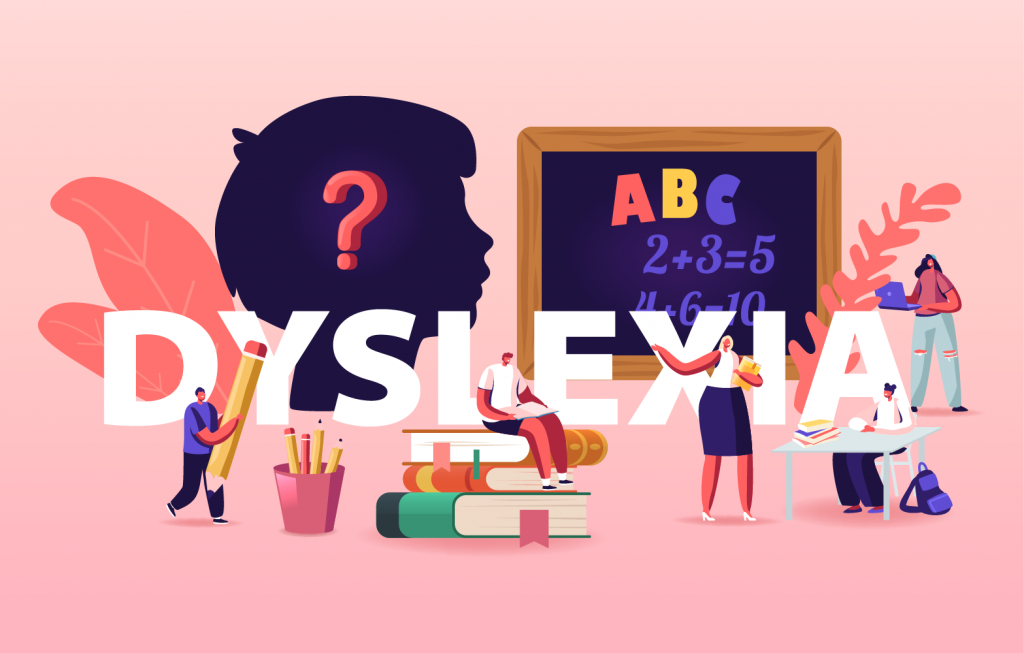Imagine a world where reading has become a puzzle of letters and perplexing messages. This is the reality for individuals with dyslexia, a learning difference that makes it challenging to comprehend written words. Dyslexia, also known as a reading disability, is a disorder that impacts academic performance and overall well-being, and self-esteem throughout a person’s life. In the United States, three million people are affected by Dyslexia. By raising awareness about dyslexia and implementing measures, we can build a society that helps individuals with dyslexia to unlock their full potential and live without difficulties. Understanding dyslexia is crucial for cultivating empathy, eradicating stigmas, and providing support services.
The historical background of dyslexia is marked by early misconceptions and stigmatization surrounding this learning difference. Dyslexia was often considered a sign of laziness; however, more research and efforts to understand the disability have brought about a shift in perception of it. Dyslexia was recognized as a learning disability in the mid-twentieth century and gained more understanding than ever before. Researchers like Samuel T. Orton and Anna Gillingham contributed to understanding dyslexia. Their work has laid the foundation for recognition and support for individuals suffering from it in the education system. Since then, ongoing understanding and support for dyslexia have grown.
It’s essential to know the signs that may indicate dyslexia’s presence by understanding it. Some common indicators include struggling with spelling, reading at a pace, and facing challenges when learning a language. For individuals with dyslexia acquiring proficiency in another language can be challenging to how their brains process sounds and acquire languages. In childhood, symptoms of dyslexia often become apparent as children encounter difficulties in tasks related to reading, writing, and language skills. Recognizing these symptoms early on is crucial as it allows for support and intervention for individuals with dyslexia. By providing them with the tools and accommodations, we enable them to navigate their journey successfully.
Understanding the causes and risk factors of Dyslexia is necessary. Although the exact cause of dyslexia remains unknown, research indicates that genetics and neurobiological factors play a role. Studies suggest that dyslexia often runs in families genetically. Neurologically, individuals with dyslexia tend to exhibit differences. External factors such as birth weight, premature birth, and exposure to substances during pregnancy affect brain development, leading to dyslexia. Knowing these causes and risk factors can help develop interventions and support systems. Early identification, appropriate educational strategies, and targeted interventions can assist individuals with dyslexia in overcoming challenges and achieving their potential. Additionally, increasing awareness about the risk factors can aid prevention efforts. Ensure that those at risk receive the support and resources to minimize the impact of dyslexia on their learning journey.

In education, various approaches have been developed to support individuals with dyslexia. Multisensory instruction and structured literacy programs, such as Orton-Gillingham, have proven effective in helping dyslexic individuals build reading and writing skills by engaging multiple senses simultaneously. Additionally, assistive technology and tools, such as text-to-speech software or specialized reading apps, provide valuable support in accessing and comprehending written material. Individualized Education Plans (IEPS) and accommodations play a role in supporting students with dyslexia in schools. These plans outline specific strategies, modifications, and resources tailored to meet the individual needs of each student. Accommodations may include extended time for assignments and tests or access to a trained reading specialist. By implementing these measures, students with dyslexia can overcome challenges and thrive academically.
In both the workplace and society, individuals with dyslexia face challenges that require understanding and support. Dyslexia can create hurdles in career paths that rely heavily on tasks involving reading and writing. However, by making accommodations and adjustments, people with dyslexia can excel in fields while bringing their unique strengths and talents. It is crucial to promote inclusivity while dispelling stereotypes surrounding dyslexia. To achieve this, education and awareness campaigns play a role in challenging these misconceptions and fostering an inclusive society. By comprehending the nature of dyslexia and its effects, we can cultivate empathy, break down stigmas, and establish environments where individuals with dyslexia receive the support they need, are valued, and have opportunities to thrive. For change to occur, advocacy work and awareness-building about dyslexia are crucial.
Delving into the depths of dyslexia, recognizing its symptoms, understanding the factors that contribute to it, implementing methods of providing support in work settings, and fostering inclusivity in society can build a world that is more empathetic and open-minded. This world will empower individuals with dyslexia to conquer obstacles, embrace their strengths, and unlock their potential. Through raising awareness, advocating for change, and offering support to those affected by dyslexia, we can create an environment where individuals are celebrated for their perspectives and contributions. Doing so will break down barriers and pave the way for success in all areas of life.
Resources
- “Dyslexia Basics.” International Dyslexia Association. Accessed July 11, 2023. https://dyslexiaida.org/dyslexia-basics/.
- “Dyslexia & Me: What Is Social Stigma?” Succeed With Dyslexia. May 12, 2022. Accessed July 11, 2023. https://www.succeedwithdyslexia.org/blog/dyslexia-me-what-is-social-stigma/.
- “A Brief History of Dyslexia.” The History of Dyslexia. University of Oxford, Accessed July 11, 2023. https://dyslexiahistory.web.ox.ac.uk/brief-history-dyslexia.
- “Dyslexia.” Mayo Clinic, August 6, 2022. , Accessed July 11, 2023. https://www.mayoclinic.org/diseases-conditions/dyslexia/symptoms-causes/syc-20353552.
- “Dyslexia.” American Brain Foundation. Accessed July 11, 2023. https://www.americanbrainfoundation.org/diseases/dyslexia/#:~:text=While%20dyslexia%20is%20usually%20a,injury%2C%20stroke%2C%20or%20dementia.
- “What Is the Orton-Gillingham Approach?” Orton-Gillingham Academy. Accessed July 11, 2023. https://www.ortonacademy.org/resources/what-is-the-orton-gillingham-approach/.
- Morin, Amanda. “A history of learning disabilities and ADHD” Understood.org. Accessed July 11, 2023. https://www.understood.org/en/articles/history-of-learning-disabilities-and-adhd.
- Eden, Guinevere. n.d. “What Is Dyslexia.” Understood.org. Accessed July 11, 2023. https://www.understood.org/en/articles/what-is-dyslexia.
























